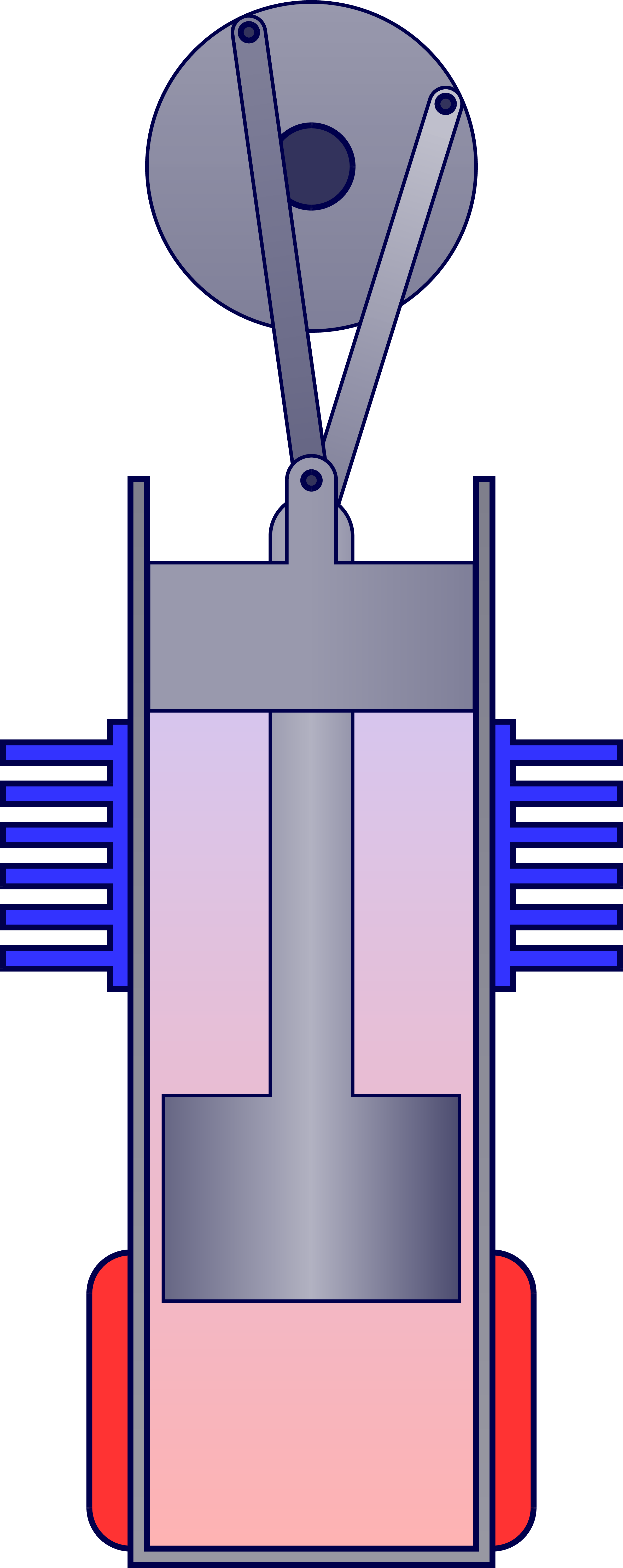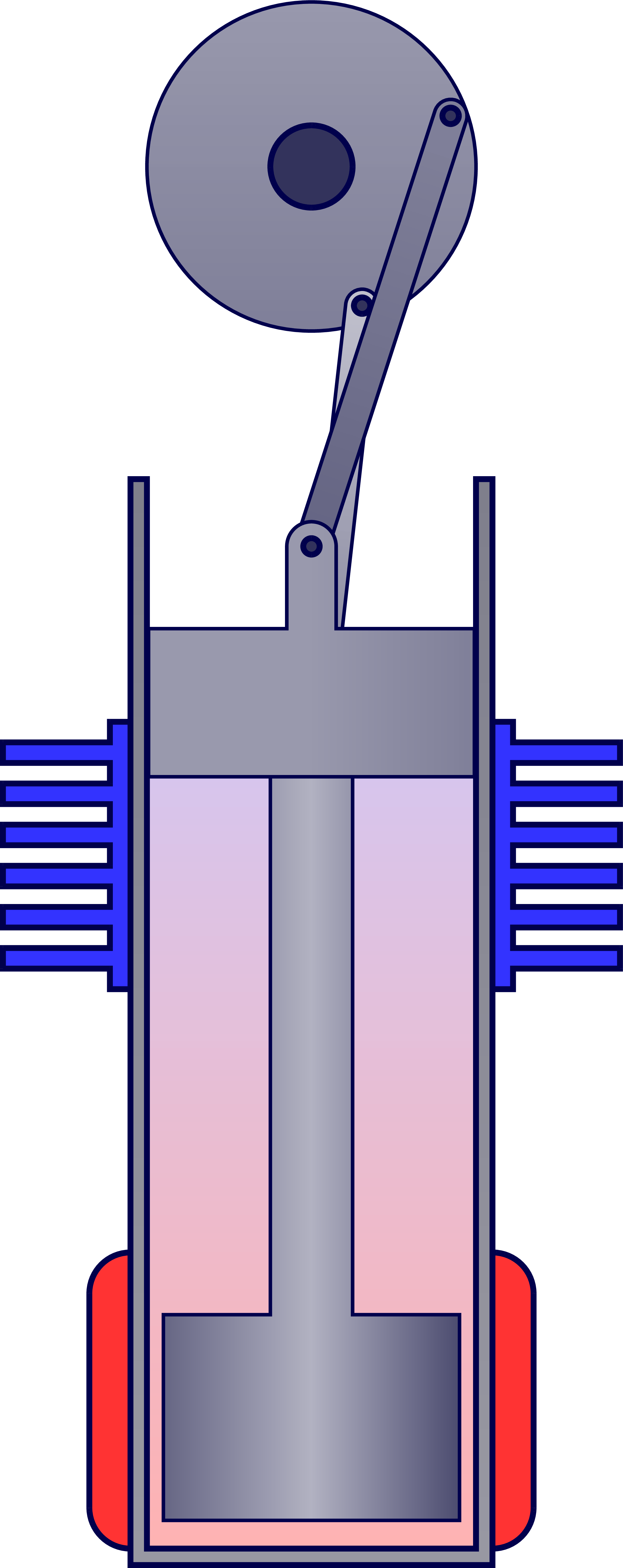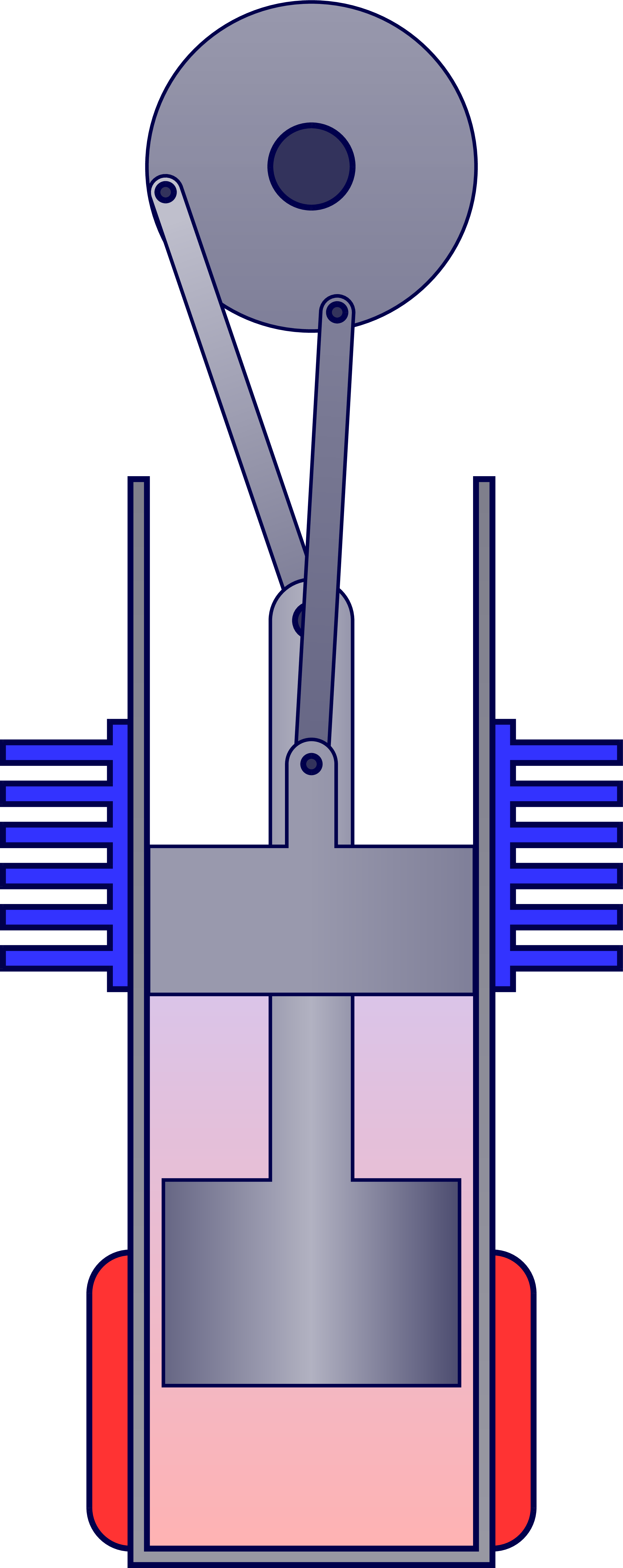Inspiration from Wikipedia.
Edit and compile if you like:
% Author: Izaak Neutelings (March 2019)% Inspiration: https://commons.wikimedia.org/wiki/File:Stirling_Animation.gif\documentclass[border=3pt,tikz]{standalone}\usetikzlibrary{calc}\tikzset{>=latex} % for LaTeX arrow head\colorlet{mylightblue}{blue!10}\colorlet{mydarkblue}{blue!30!black}\tikzstyle{arrow}=[->,line width=2,mydarkblue]\tikzstyle{vector}=[->,line width=3,green!50!black]\tikzstyle{gas}=[top color=blue!20,bottom color=red!30]\tikzstyle{knob}=[line width=2,mydarkblue,fill=blue!20!black!80]\tikzstyle{wall}=[line width=2,mydarkblue,top color=blue!10!black!50,bottom color=blue!10!black!40]\tikzstyle{arm1}=[very thick,mydarkblue,top color=blue!20!black!25,bottom color=blue!20!black!50]\tikzstyle{arm2}=[very thick,mydarkblue,top color=blue!20!black!50,bottom color=blue!20!black!60]\tikzstyle{piston1}=[very thick,mydarkblue,top color=blue!20!black!60,bottom color=blue!20!black!70,middle color=blue!20!black!30,shading angle=90]\tikzstyle{piston2}=[very thick,mydarkblue,top color=blue!20!black!40,bottom color=blue!20!black!50,middle color=blue!20!black!40,shading angle=90]% ANGLE\newcommand{\getangle}[3]{%\pgfmathanglebetweenpoints{\pgfpointanchor{#2}{center}}{\pgfpointanchor{#3}{center}}\global\let#1\pgfmathresult}% ENGINE\def\engine#1{\def\R{2} % flywheel\def\Ra{1.8} % arm attachment on flywheel\def\Rb{1.8} % arm attachment on flywheel\def\l{5.5} % arm length\def\w{0.2} % arm width\def\wa{0.5} % piston 1 rod width\def\wb{0.3} % piston 2 rod width\def\ha{6.8} % piston 1 rod length\def\hb{1.0} % piston 2 rod length\def\Wa{3.6} % piston 1 width\def\Wb{3.96} % piston 2 width\def\Ha{2.5} % piston 1 height\def\Hb{1.8} % piston 2 height
Click to download: engine_stirling_beta.tex • engine_stirling_beta.pdf
Open in Overleaf: engine_stirling_beta.tex





